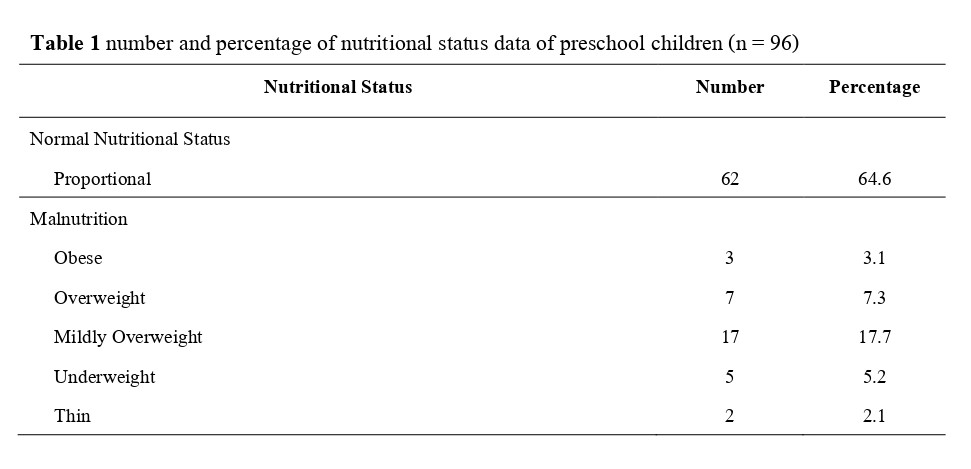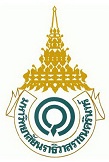ปัจจัยที่เกี่ยวข้องกับภาวะโภชนาการของเด็กวัยก่อนเรียนใน 3 จังหวัดชายแดนใต้
คำสำคัญ:
ภาวะโภชนาการเด็กวัยก่อนเรียน, เด็กวัยก่อนเรียน, 3 จังหวัดชายแดนใต้บทคัดย่อ
ภาวะโภชนาการของเด็กวัยก่อนเรียนเป็นดัชนีบ่งชี้ภาวะสุขภาพโดยรวมของเด็ก และเป็นปัจจัยพื้นฐานในการพัฒนาเด็กให้เจริญเติบโตเต็มศักยภาพ การวิจัยครั้งนี้มีวัตถุประสงค์เพื่อ 1) ศึกษาสถานการณ์ภาวะโภชนาการของเด็กวัยก่อนเรียนใน 3 จังหวัดชายแดนใต้ และ 2) ศึกษาความสัมพันธ์ระหว่างปัจจัยด้านเด็กและปัจจัยด้านผู้ดูแลกับภาวะโภชนาการของเด็กวัยก่อนเรียนใน 3 จังหวัดชายแดนใต้ กลุ่มตัวอย่างเป็นผู้ดูแลของเด็กวัยก่อนเรียนจำนวน 96 คน เก็บข้อมูลอยู่ระหว่างเดือนมกราคมถึงเดือนพฤษภาคม พ.ศ. 2567 โดยเครื่องมือที่ใช้ในการเก็บรวบรวมข้อมูล ประกอบด้วย 1) แบบสอบถามข้อมูลส่วนบุคคลของเด็กวัยก่อนเรียนและผู้ดูแล 2) แบบบันทึกข้อมูลภาวะโภชนาการของเด็กวัยก่อนเรียน 3) แบบสอบถามพฤติกรรมการบริโภคอาหารของเด็กวัยก่อนเรียน 4) แบบวัดความรู้ของผู้ดูแลเกี่ยวกับภาวะโภชนการในเด็กวัยก่อนเรียน 5) แบบสอบถามพฤติกรรมการจัดอาหารให้เด็กวัยก่อนเรียน และ 6) แบบสอบถามเจตคติเกี่ยวกับการบริโภคของผู้ดูแลเด็กวัยก่อนเรียน มีค่าความเชื่อมั่นเท่ากับ .80, .90, 80 และ .82 ตามลำดับ วิเคราะห์ข้อมูลด้วยสถิติบรรยาย และสัมประสิทธิ์สหสัมพันธ์พอยท์ไบซีเรียล
ผลการศึกษาพบว่าร้อยละ 64.6 ของเด็กวัยก่อนเรียนมีภาวะโภชนาการปกติ พฤติกรรมการบริโภคอาหารของเด็ก ความรู้ของผู้ดูแลเกี่ยวกับภาวะโภชนาการ และพฤติกรรมการจัดอาหารของดูแล มีความสัมพันธ์ทางบวกกับภาวะโภชนาการของเด็กอย่างมีนัยสำคัญทางสถิติ (rpb=.378, p < .01; rpb =.226, rpb =.203, p < .05) ขณะเดียวกันเจตคติเกี่ยวกับการบริโภคของผู้แลมีความสัมพันธ์ทางลบกับภาวะโภชนาการเด็กอย่างมีนัยสำคัญทางสถิติ (rpb = -.207, p < .05)
ดังนั้น ควรส่งเสริมพฤติกรรมการบริโภคอาหารจากผู้ดูแล การให้ความรู้เกี่ยวกับ ภาวะ โภชนาการแก่ผู้ดูแล การส่งเสริมพฤติกรรมการจัดอาหารที่ถูกต้องให้เด็กและส่งเสริมเจตคติที่ดีเกี่ยวกับการบริโภคของผู้ดูแลเด็กเพื่อให้เด็กวัยก่อนเรียนมีภาวะโภชนาการปกติ
References
Boonsiri, A. (2016). Livelihoods of families affected by the unrest in the Special Development Region, Southern Border: Songkhla case study, 2004-2013. Journal of Humanities and Social Sciences, Thaksin University, 11(1), 237 - 254. https://so02.tcithaijo.org/index.php/ HUSOTSU/article/view/104230/83111
Bronfenbrenner, U. (1994). Ecological models of human development. In International encyclopedia of education, 3(2), 1643 – 1647. https://www.ncj.nl/wp-content/uploads/media-import/docs/ 6a45c1a4-82ad-4f69-957e-1c76966678e2.pdf
Burns, N., & Grove, S. (2009). The practice of nursing research: Appraisal, synthesis, and generation of evidence (6th ed.). Saunders Elsevier.
Department of Health, Ministry of Public Health. (2021a). Graph showing weight according to height criteria for monitoring the growth of children aged 3–6 years. https://nutrition2. anamai.moph.go.th/web-upload2f16c
Department of Health, Ministry of Public Health. (2021b). Food consumption behavior assessment form. https://nutrition2.anamai.moph.go.th/th/book/206999
Department of Health, Ministry of Public Health. (2021c). Details of Nutritional Surveillance Indicators for the Fiscal Year 2023. https://nutrition2.anamai.moph.go.th/web-upload
Jintana, P., Chaiyana, B., & Narumon, T. (2015). Report on the study "Development of Thai preschool children in 2014." Nonthaburi: Health Promotion Division, Department of Health (Duplicated document).
Jintana, S. (2020). Assessment of nutritional status (3rd ed.). Khon Kaen University.
Jirapa, S. (2022). Factors associated with the nutritional status of preschool children. Singburi Hospital Journal, 31(2), 81-94. https://he01.tci-thaijo.org/index.php/shj/article/view/258850
McLeroy, K.R., Steckler, A., & Bibeau, D. (1988). The social ecology of health promotion interventions. Health Education Quarterly, 15(4), 351 - 377. http://tamhsc.academia.edu/ KennethMcLeroy/ Paper/81901/An_Ecological_Perspective_on_Heath_Promotion_Programs.
Nutrition Division, Department of Health, Ministry of Public Health. (2020). Recommended dietary allowances for Thai people 2020. https://nutrition2.anamai.moph.go.th/th/book/download/ ?did=194515&id=47232&reload=
National Statistical Office of Thailand. (2020). Survey project on the situation of children and women in Thailand 2019. Author
Royal College of Pediatricians of Thailand. (2017). A guide for parents on childcare and development: Early childhood (0-3 years). Pediatric Society of Thailand.
Sarocha, N., Narumon, S., & Apinya, H. (2014). Knowledge of nutrition and food management behavior for preschool children of parents in government schools, Chumphon Province. Kasetsart Journal (Social Sciences), 35(2), 235 - 244. https://so04.tci-thaijo.org/index.php/ kjss/article/view/2472 36/167949
Thailand Multiple Indicator Cluster Survey [MICS] (2019, August 1). Survey Finding Report.
https://www.unicef.org/thailand/media/5146/file/Multiple%20Indicator%20Cluster%20Survey %202019.pdf
Waraporn, J. (2021). A study on the growth status of infants aged 0-6 months: A case study of infants n Suphanburi, Loei, and Satun provinces. Academic Journal of the Nutrition Division, Department of Health, Ministry of Public Health, 3(2), 8 - 10. https://nutrition2.anamai .moph.go.th/th/download-06/download?id=90535&mid=32009&mkey=m_document&lang= th&did=22643
Weerawan, S. (2008). Factors affecting the nutritional status of children in the Ban Klang Municipal Early Childhood Development Center, San Pa Tong District, Chiang Mai [Master’s thesis]. Chiang Mai Rajabhat University
World Health Organization. (2021, August 10). Nutrition. https://www.who.int/health-topics/nutrition # tab=tab_

Downloads
เผยแพร่แล้ว
How to Cite
ฉบับ
บท
License
Copyright (c) 2025 วารสารมหาวิทยาลัยนราธิวาสราชนครินทร์

This work is licensed under a Creative Commons Attribution-NonCommercial-NoDerivatives 4.0 International License.


